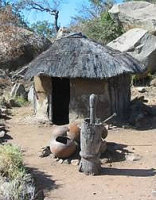Most visitors to the Kruger Park know it offers a wildlife experience that ranks with the best in Africa, but not many people are aware that the Kruger National Park also protects some of the important cultural heritage sites in South Africa.
Whilst Kruger Park is best known for its big game sitings and large expanses of wilderness; it has a unique cultural and historical landscape and diversity, with well over 255 recorded archaeological sites ranging from early Stone Age (roughly 1 million years ago) to various Iron Age settlements and recent historical buildings and sites.
* There are almost 254 known cultural heritage sites in the Kruger National Park, including nearly 130 recorded rock art sites.
* There is ample evidence that prehistoric man – Homo erectus roamed the area between 500 000 and 100 000 years ago
* Cultural artifacts of Stone Age man have been found for the period 100 000 to 30 000 years ago.
* More than 300 archaeological sites of Stone Age man have been found scattered throughout the park.
* Evidence of Bushman Folk (San) and Iron Age people from about 1500 years ago is also in great evidence.
* There are significant archaeological ruins at Thulamela and Masorini
Sites that are currently open to the public are:
* Albasini Ruins – at the Phabeni Gate, 10 km from Hazyview.
* Masorini (late Iron Age site) – 12 km from the Phalaborwa gate on the tar road to Letaba rest camp
* Thulamela (stone walled site) – Far North region of the Park





